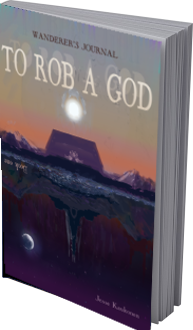Explaining the writing process
Everyone writes different. In this article we explore my drafting and timelining.
Preparation, pre draft 1
When it comes to the great axis of "outliner versus discovery writer", usually I'm around 70% an outliner and 30% discovery writer. For me, a story needs to be planned well in advance, with the core plot elements decided before I write a single line of prose. I'm uncomfortable writing the first novel in a series if I don't know how the whole series will end.
This "pre" draft involves worldbuilding, outlining, designing characters, planning the entire series, and doing research. I usually try to wrap this process in 2-3 months, but permit myself to change the earlier plans in later stages of the novel's writing process. Unlike most stages of my writing process, I tend to set myself an absolute deadline for this stage so I don't get stuck in worldbuilding. After all, my mission is to deliver a novel someone can read, not a new P&P RPG manual describing a world.
Draft 1
The fun part! This is where I turn an outline into book parts, and book parts into chapters, and chapters into scenes. For every scene, I try to answer the following question: "How does the character action advance worldbuilding / plot / character arc?" If the scene does none of those things, I usually cut it while writing the scene. If the scene does only one of those things, I'll likely write it, but consider the scene guilty until proven innocent. However, at this stage I'm not too critical of what exactly I write as long as I make good progress towards the planned ending of this novel. The whole point is to write anything at all to just get the draft done. As I go through the novel, I usually invent new characters that weren't in the original outline. I tend to add "bridge scenes" that go from one point in the outline to another, and add slice-of-life moments that only show the characters doing their thing. This kind of scenes are usually cut and merged into other scenes in later drafts, but they are still vital to write as I often discover new aspects of my characters and world in the process.
The first draft usually takes me anywhere between 3-6 months, depending on how my life is at the time.
Draft 2
When I finish the first draft, I take a break of maybe two weeks. During this time, I try to do non-writing things like music, drawing, or taming alligators. Once rested, I return to the story and do the draft analysis. This is a reasonably mechanical process where I take a whole bunch of A4 papers and write the following topics:
- Characters
- Character arcs
- 10 most important plots
- Important worldbuilding
- Important items
- Important concepts
- Themes
Using bullet points, I fill each paper with items specific to that topic. For example, the 10 (mildly spoilery) plots in Wanderer's Journal might be listed as follows:
- Nerguiin escaping White Temple
- Stopping the drought
- Tricking Ereshkigal
- Stealing lapis lazuli
- Learning thieving and memorizing the Wanderer's journal
- Heist through the Golden City
and so on (I'm trying to avoid spoiling too much...)
Once I have all the various bullet points listed, I take a new sheet of A4 where I add 3 columns: Love, indifferent, hate. I go through each of the topics, thinking about every bullet point, and add them under one column, thinking what my own opinion is of that part of the story. Do I really love a character but hate another one? Do I not have an opinion of a plot arc? Is this part of the magic system weak?
With the list made, I then go through every item in the indifferent and hate column, and decide if I want to cut them, strengthen them, or replace them. I add a single character mark next to the item, and once I have done that, I start tackling the most difficult task in writing a novel: Outlining the second draft. Now I have to ask the difficult questions such as: "If I hate the story arc where Nerguiin becomes a baker for a while and I need to replace it with something else, what should I replace it with?" For this part of story writing, I really don't have much advice to provide - I kind of just take a long time to answer these difficult questions until I eventually burp out a new outline, usually a much stronger than the one before.
The beauty of this draft analysis step is that it allows you to reflect on your own ability as a writer: Are you mostly listing items under indifferent? If so, why is that? Are most of the indifferent items characters? If so, perhaps that is the part of your craft where you might want to study more so that next time get here, you can do better. Every time I do this analysis, I realize I have less and less stuff to fix than the previous novel.
Once I have constructed a new outline, often cutting entire segments of the story, it's time to start writing the second draft. I try to do this in 3-4 months.
First betareading
Once the second draft is finished, I start sharing it with my novel writers' group. This is where I get a second opinion on what works, if I explained worldbuilding properly, if the pacing is good, if the characters are interesting, if the plot arcs are weak, and so on. Usually this is a slow process that can take up to 4 months as we do the feedback in small chunks. While this is going on, I work on other novels. After all the feedback is finished, I start going through what people said and plan the third draft.
Draft 3
Depending on how ruthless the feedback from betareaders was, I might now have to do a significant redraft. Instead of using the "love/indifferent/hate" system from the end of draft 1, I now utilize the notes I took during the feedback process. The third draft is often complicated as it might require me to fix plot arcs that turned out to be more messy than I realized, and it might require me to remove characters that betareaders found boring. This is a grisly draft, but often results in an almost-finished novel. This process usually takes me another 3-6 months, depending on how much of a tirefire the novel was in draft 2.
Second betareading
A completed draft 3 goes to the same betareaders for a more cursory analysis, and also to other betareaders who are not writers themselves. Usually I still have to adjust elements of the story after draft 3, but the changes are minor; I rarely change entire plot arcs or do major restructuring in the story. Writing a draft 4 takes me anywhere between 3-4 months.
Draft 4
This is the professional edit. Here I pay money to someone to read the entire thing, do more critique on the story elements, but also give me the line level feedback. I do little during this draft myself and mostly just let others work for me.
Draft 5
The final draft, usually. At this point I add final images in the book and do the final proofread.


